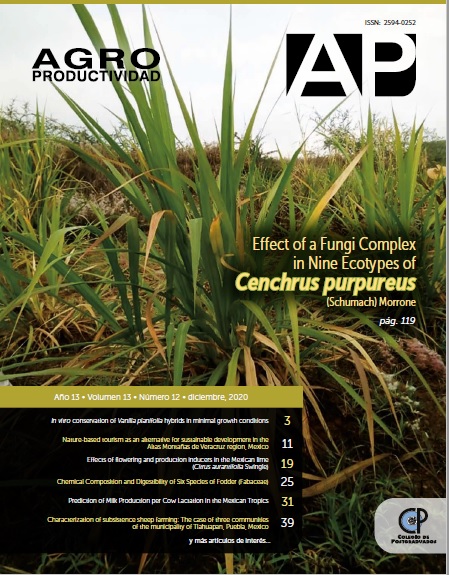Characterization of subsistence sheep farming: The case of three communities of the municipality of Tlahuapan, Puebla, Mexico
##plugins.themes.bootstrap3.article.main##
Keywords
sheep, subsistence producers, production systems, typology.
Resumen
Objective: to characterize household units for sheep production at three localities in the Santa Rita Tlahuapan municipality, Puebla.
Design/methodology/approach: semi-structured interviews conducted with 38 producers. Variables of the producer profile, crop production and herd management were analyzed using descriptive statistics, cluster analysis and variance analysis.
Results: four groups of producers were identified; most of them (92%) were classified as small producers, with 24 to 36sheep and low production of crop forage. The producer’s average age was 55 years, with an average family size of four.Economic savings is the main objective for this production and family labor is used exclusively in sheep farming activities.The animals are housed in rustic pens, with no difference in their age, sex or physiological stage. Their main food source is pastures forage and cultivation areas; mostly supplemented (92%) with mineral blocks and common salt.
Limitations/Implications: the lack of producer records and social mistrust to some degree to provide information.
Findings/conclusions: the assessed productive units are for subsistence, having sheep farming as a secondary activity, with low productive parameters. The poor housing practices, the scarcity of own grazing lands, and the animal’s nutritional stress are identified as the main factors that stagnate sheep farming in the study area.

